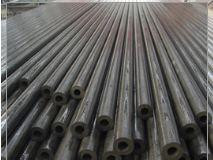Aluminum pipe can tend to be a feasible alternative for certain applications. Compared further to stainless steel, aluminium is much thinner and often rust resistant. Stainless, though, is much harder and quicker to solder than aluminium. If thermal conductivity is indeed important, then aluminium will be the best option.
If food interaction or reactivity is essential, stainless steel duplex 2205 pipe would be the safest option. For outdoor designs, stainless steel might be passivated to have a thin film of chromium oxide on the whole surface to provide more protection to corrosion, whereas aluminium may need to somehow undergo preparation such as with powder coating or otherwise anodizing to assist with the whole resistance of the particular elements.

Copper Duplex 2205 Tube has historically been used further for plumbing due to its increased longevity and otherwise ability to tolerate a wide variety of temperatures. On the other side, copper is scarce and is typically cost-effective for plumbing the whole building. It also takes a great deal of expertise whenever assembling copper pipes because they have to be actually soldered to avoid leakage, and many other DIYers probably don't have the requisite skill level to somehow solder copper pipes which could be in their own homes.
Galvanized Stainless Steel 304 Pipe is often used for plumbing, but its expense and the propensity to somehow leak around the particular threaded fittings contributed to its discontinuation of use. In this sort of case, stainless pipes are not the safest choice.
Various plastics are now being used in many of the applications today. Plastic pipe is respected for its ease of usage and reduced cost relative to certain metals, but they still have their own range of limitations. The lower quality of plastics excludes their viability for usage where the application or mission demands a greater degree of further strength and longevity. Stainless Steel 316 Pipe is also the safest option in these situations.
Although some plastic pipe can now be used outdoors and otherwise even buried, it is often susceptible to internal and external stresses, which can easily cause it to crack and potentially split. Stainless Steel 304 Tube is indeed considerably safer and can easily accommodate high pressures and even temperatures. If the project needs the hose to be somewhat able to bend easily, the rubber pipe would perform best based on the form of plastic.
Now that the fundamentals have been addressed, let us take a look at the advantages and disadvantages of further using Stainless Steel 316 Tube for your particular use. The benefits of using the stainless pipes are strength, longevity, relative cost, weldability and otherwise corrosion resistance. Finishing the operations may be carried out to make the particular SS 304 Pipe Fittings resistant for microbial growth, making it somehow a very desirable (and typically required) alternative for the food and otherwise beverage industry and the wastewater treatment plant, because it does not react mostly with food and is quickly washed and sterilized.